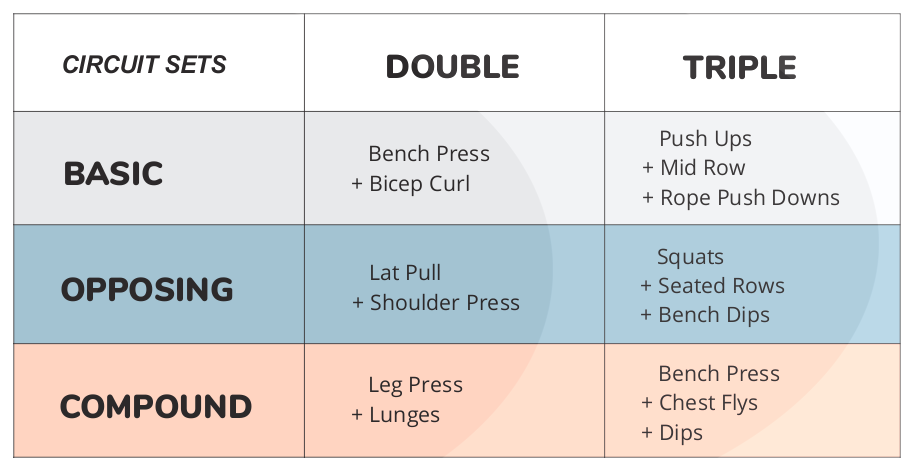BENEFITS OF CIRCUIT SETS
Do I need to perform circuit sets? For most endurance athletes the answer is yes you should. Improving lung capacity in correlation with oxygen recovery is practically a requirement for every endurance athlete. For strength development and many other sports such as bodybuilding, weightlifting and powerlifting, integrating circuits are not a mandatory thing but they certainly can help with performance.
Double Circuit Sets benefits
Ideal for trying to expend more calories within a shorter period. When two exercises are performed back-to-back, your heart rate will be escalated for a longer period. This assists with burning fat.
Triple Circuit Sets benefits Ideal for athletes who have progressed in their
VO2 (UC Davis. n.d.) Recovery. Use triple sets if you want to produce more lifting volume within the workout. If programmed correctly, almost the entire body will be conditioned. Hitting triples and quadruple circuits may improve endurance conditioning for obstacle courses.
Compound Circuit Sets examples two or more exercises involving movements within the same muscle group.
- Squats and Calve Raise (double compound circuit)
- Squats and Prone Leg Curls (double compound)
- Lunges. Deadlifts, Hip Thrusters (triple compound circuit)

 Photo: Monica Rea.
Photo: Monica Rea.
